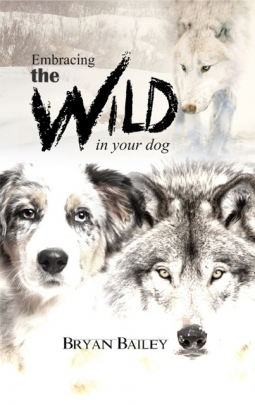
Embracing the Wild in Your Dog
by Bryan Bailey
This title was previously available on NetGalley and is now archived.
Send NetGalley books directly to your Kindle or Kindle app
1
To read on a Kindle or Kindle app, please add kindle@netgalley.com as an approved email address to receive files in your Amazon account. Click here for step-by-step instructions.
2
Also find your Kindle email address within your Amazon account, and enter it here.
Pub Date Oct 06 2015 | Archive Date Dec 14 2015
Smith Publicity | FastPencil
Description
This book is not a dog obedience book. Rather, it is about developing a deep understanding of the authors of your dog's behavior; nature and the wolf. For all that man has done to carve the wolf from the wild to create a biological doll, today's dog is still a wolf at heart and the accompanying instincts borne from such ancestry defines how the dog approaches its world.
In this book, you will come to know the wolf in your dog and the tools that nature gave it to survive and coexist in both the mountains and in your home. You will learn how activating and deactivating the natural wolf impulses and mechanisms in your dog will lead to the harmonious existence and the control you always dreamed of. Most of all, you will come to embrace the wild in your dog and the grace and the peace that is breathed into its acceptance.
A Note From the Publisher
Author is available for interviews, blog tours, autographed book giveaways, contests, and book club discussions. Print copies are available upon request.
Author is available for interviews, blog tours, autographed book giveaways, contests, and book club discussions. Print copies are available upon request.
Author is available for interviews, blog tours, autographed book giveaways, contests, and book club discussions. Print copies are available upon request.
Advance Praise
A MUST READ for all dog owners!!By Frances on September 27, 2015Not your typical dog book in that it tells a heart warming story while also shooting it to us straight about what it is that we really own; not a little person in a fur coat. I have read lots of books on dog behavior and training and nothing has ever made sense to me like Bryan Bailey does in this book. He is a captivating storyteller and obviously an expert in his field. I watched as my dog hunted for a mole this morning in my front yard and I realized, he is right, they are still wolves at heart. Wait until you read the chapter titled, Difficult Decisions. If you can make it through without tears, you are inhuman. This is a book that will stay with you for a long, long time...
Marketing Plan
Bryan Bailey is a nationally-recognized, award-winning animal behaviorist, who has shared his expertise with Dog World, At Home Mid-South Tennessee, Bloom Magazine, and Fox News, along with veterinarians, dog owners and celebrities such as John Mellencamp, James Fitzpatrick, the late Junior Seau, and Julio Jones.
Bailey’s unique qualifications also include: nationally-certified Master Trainer and Pharmacotherapy Behaviorist, decorated veteran of the U.S. Navy, working extensively as a supervisor and trainer for the U.S. Navy’s dolphin and sea lion projects, honor graduate of the Indiana Law Enforcement Academy with duties including training supervisor of the Monroe County Sheriff’s Department K-9 narcotics detection, and search and rescue teams, and trainer for the Indiana Department of Health and Social Services to train service dogs for children with Muscular Dystrophy. He has also studied canine problem solving and pharmacotherapy at Cornell and Tufts University, wolf behavior and social dynamics at Battleground Indiana and Ely Minnesota wolf conservatories, is a certified Veterinary Technician, and has professionally shown dogs in AKC Obedience, Conformation, Schutzhund and Ring Sport.
His first book, Embracing the Wild in Your Dog, is a culmination of his experiences and expertise and will be soon followed by his second title, The Hammer – Understanding Canine Aggression. Bailey and his wife, Kira, reside in Memphis, TN, with their children, dogs, and cats. Together, they own ProTrain Memphis and Taming the Wild.
Available Editions
| EDITION | Paperback |
| ISBN | 7676767676543 |
| PRICE | $16.95 (USD) |
Links
Average rating from 19 members
Readers who liked this book also liked:
John Kotter; Holger Rathgeber
Business, Leadership, Finance, Nonfiction (Adult)
Maureen Johnson; Jay Cooper
Entertainment & Pop Culture, Mystery & Thrillers
Sara Biggs / illustrator: Daniela Frongia
Children's Fiction
Todd Hagopian
Business, Leadership, Finance, Nonfiction (Adult), Professional & Technical


















